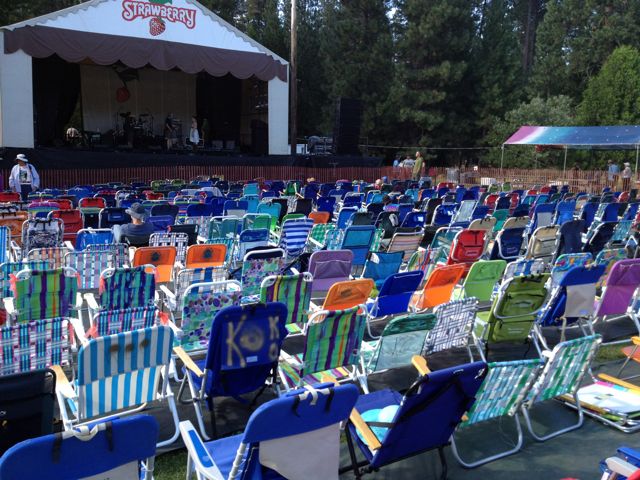The Chairs at the Strawberry Music Festival
I was at one of the oldest music festivals in America.  â€Strawberry†takes place near Hetch Hetchy reservoir in the high Sierra in California, and takes place twice a year on Memorial Day and Labor Day.  It goes for full days, and many people have been coming for 25 years.
At 7 AM each day people are lined up at the gate with their chairs and then, in an orderly process, are let in.  After placing their chairs they leave, returning throughout the day to attend events. Over the years a cultural value has emerged. Anyone can sit in any chair that is unattended during any event. But the second that the owner of the chair appears,  the person using that chair hops up, says thanks, and finds another place to sit. During headlining events in the evening, there are few unattended chairs and people  must stand or sit way in the back.
This was my first time at the event and I must have heard people talking about â€how the chair process works†25 times. One evening, a group of people in front of  us were discussing with some indignation a couple other festivals they had been to in which people â€just did not understand how to use the chairs.†They talked of a number of conflicts over empty chairs and were attributing these problems to â€the kind of people who attend that (other) festival.”  They had somehow elevated a particular cultural value taking place at Strawberry into some sort of general proposition regarding what human beings should know about (empty) chairs at festivals.
Of course, how the Strawberry Festival chairs are used is a wonderful example of a cultural value that is passed down again and again year after year. Â Unless one is subject to the processes of transmission – of hearing again and again how the process works – one would never know and confusions would reign.
At another festival, I know that I would not even sit in any other chair that was not my own. Â I know that others might be confused at observing an empty chair for long period of time and figure that they might as well sit in it. Â Â With the rules unclear, Â the arrival of the proper owner might trigger all sorts of confusions.
One of the reasons that Strawberry is so beloved relates to the many rules and procedures that have evolved over the years. Participants have come to embrace and continually help propagate these. Â That is what culture is all about.
Find out about the Strawberry Music Festival.
